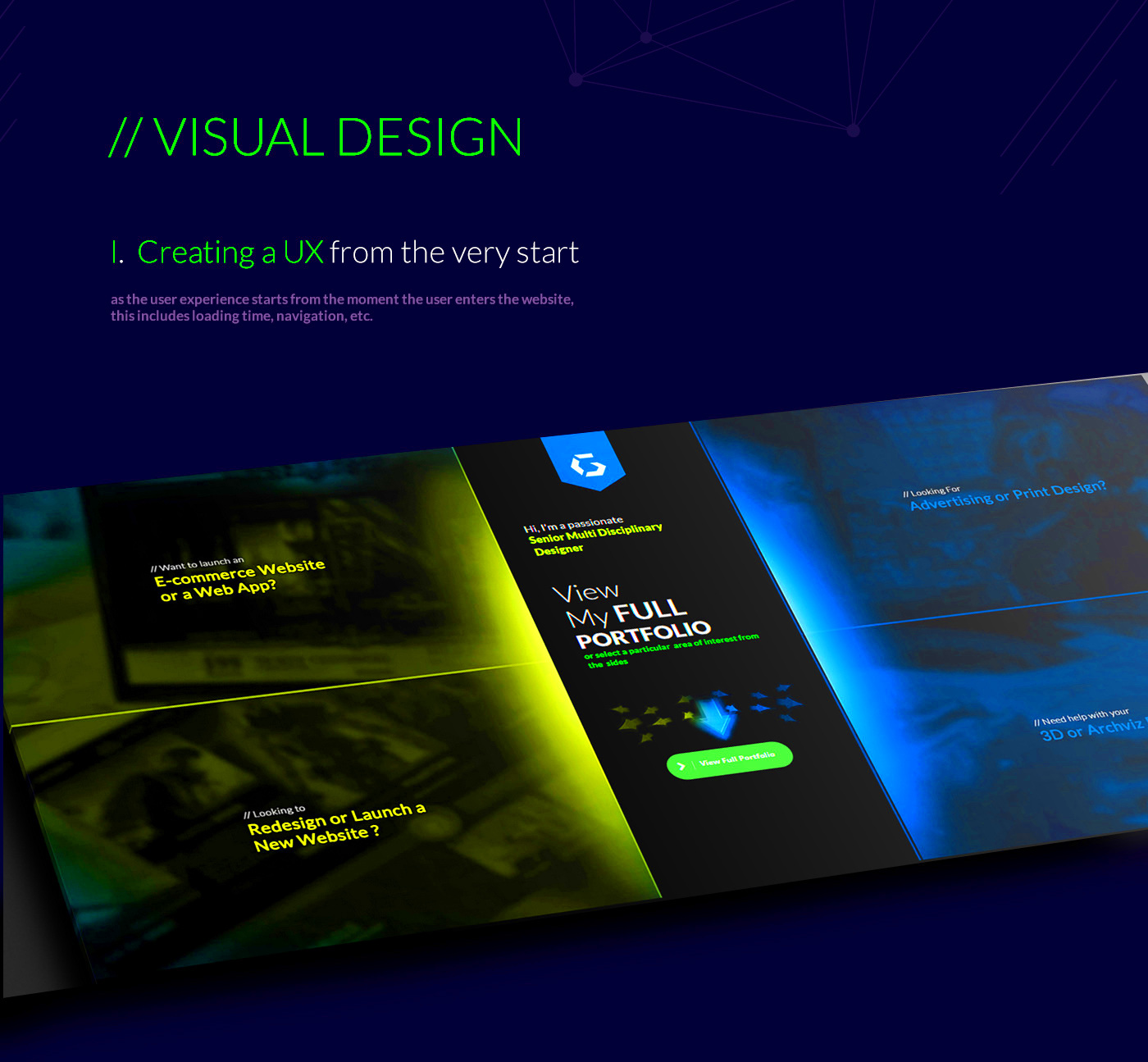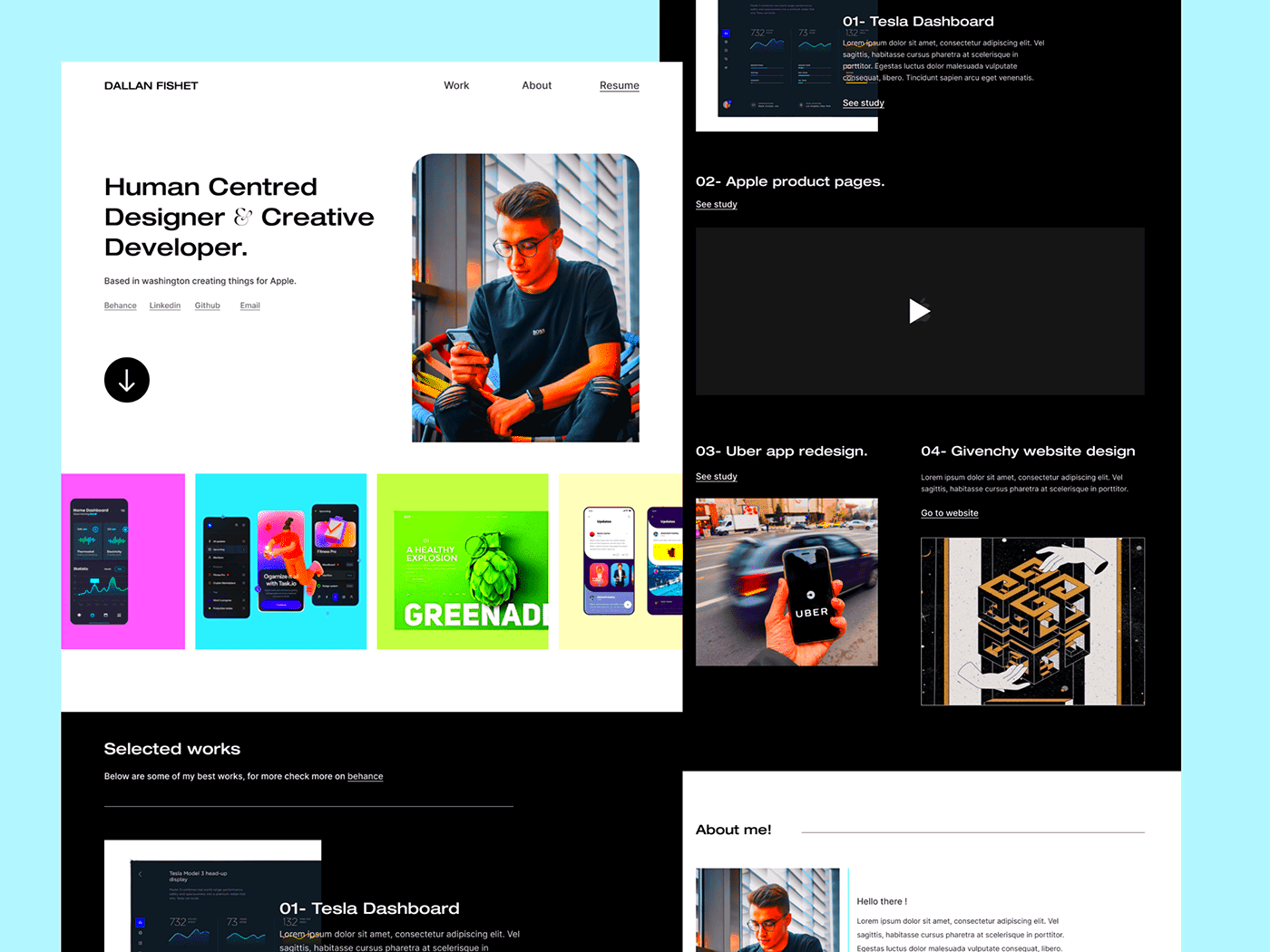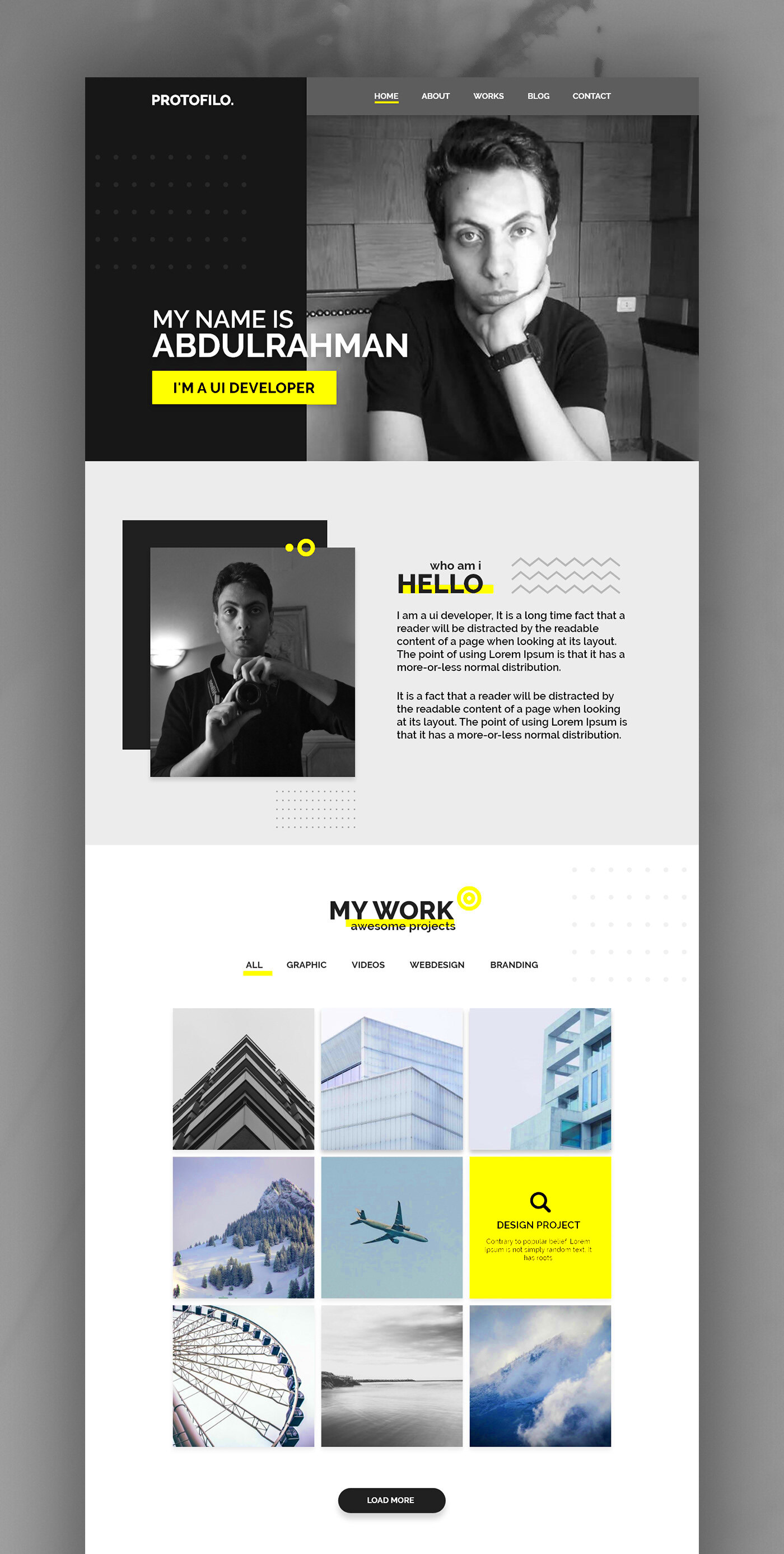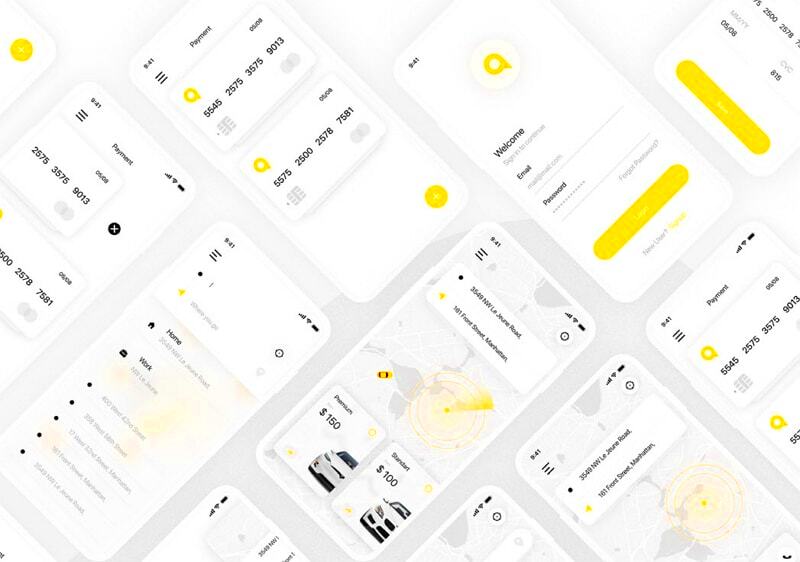Behance is a popular online platform where creative professionals, especially designers, can showcase their work. For UX designers, it’s a fantastic place to build an online portfolio, connect with peers, and get noticed by potential employers or clients. Having a Behance portfolio can serve as a digital resume, showcasing your design thinking and problem-solving abilities in real-world projects.
With millions of users, Behance gives you a global audience to share your UX journey. It's not just about showing your skills but also about presenting how you approach design challenges, making it an important tool for career growth in the UX field.
Steps to Create an Impressive UX Portfolio on Behance

Creating a UX portfolio on Behance is easy, but crafting one that leaves a lasting impression takes some thought. Follow these steps to make sure your portfolio stands out:
- Sign Up and Set Up Your Profile: Fill out your bio, link to your website (if you have one), and upload a profile picture. Make sure your bio reflects your UX expertise.
- Choose Your Best Projects: Don’t showcase every project you've ever done. Select a few key projects that highlight your strengths and versatility in UX design.
- Add Detailed Case Studies: For each project, include a case study that outlines the problem, your process, and the solution. This shows potential employers how you think through design challenges.
- Use High-Quality Images: Upload clear images of your work. Screenshots, wireframes, and mockups should be high resolution to showcase your work professionally.
- Include User-Centered Insights: Talk about user feedback, testing results, and how your designs improved the user experience. This adds credibility to your process.
- Stay Active: Regularly update your portfolio with new projects and engage with other creators to build a strong network.
Also Read This: How to Use Watermarked Images for Your Business without Hurting Your Brand
How to Showcase Your UX Skills Effectively

In UX design, showcasing your skills goes beyond just displaying finished designs. Here's how to effectively present your UX abilities:
- Highlight Your Design Process: Don’t just show the final product. Take viewers through your design journey. Start with the problem, then discuss your research, wireframes, user flows, and how you tested solutions.
- Showcase Problem-Solving Skills: Employers are not just interested in pretty designs. They want to see how you solve problems. Describe the challenges and how your UX design made things easier for users.
- Use Real-World Metrics: Whenever possible, include measurable outcomes of your design work. For example, did the redesign reduce bounce rates or increase conversions? Numbers make your work more impactful.
- Share User Feedback: If you’ve conducted usability tests or gathered feedback, share those insights. It demonstrates that your designs are user-centered and not just visually appealing.
- Focus on Collaboration: UX design is often a team effort. Mention how you worked with developers, product managers, or other designers. It shows you’re a collaborative professional.
Also Read This: How to Access Your Resume on the LinkedIn App
Tips for Organizing Your Projects for Maximum Impact

When it comes to creating a portfolio, organization can make or break your presentation. A well-organized portfolio allows viewers to navigate your work easily and grasp your design skills quickly. Here are some tips to help you organize your projects for maximum impact:
- Group by Category: Consider organizing your projects by category, such as web design, mobile apps, or user research. This makes it easier for potential employers to find relevant work that showcases your strengths.
- Use Consistent Layouts: Keeping a consistent layout for each project helps viewers know what to expect. Use the same format for presenting your case studies to create a cohesive look.
- Prioritize Quality Over Quantity: It’s better to showcase a few well-executed projects than a large number of average ones. Choose pieces that highlight your best work and reflect your unique style.
- Include Navigation Aids: Use tags, filters, or even a table of contents at the start of your portfolio to help viewers find what they are looking for quickly.
- Highlight Recent Work: Place your most recent projects at the top or in a featured section. This shows that you are active and continuously improving your skills.
By following these tips, you can create a portfolio that not only showcases your work but also enhances the viewing experience for potential clients and employers.
Also Read This: Getting more likes on Behance
The Importance of Visual Storytelling in UX Portfolios
Visual storytelling is a powerful tool in UX design. It goes beyond merely presenting your work; it tells the story behind each project. This approach helps viewers connect emotionally and intellectually with your designs. Here’s why visual storytelling is crucial for your UX portfolio:
- Engages Your Audience: A compelling narrative draws viewers in, keeping them interested in your projects. Use visuals like images, videos, and diagrams to enhance your story.
- Demonstrates Your Thought Process: By illustrating the journey from problem to solution, you show your design thinking and decision-making process. This gives potential employers insights into your skills.
- Highlights User Impact: Sharing how your designs improved user experiences, using before-and-after visuals, helps to clarify the effectiveness of your solutions.
- Builds a Memorable Portfolio: Storytelling can make your portfolio more memorable. Viewers are likely to remember the engaging stories behind your designs rather than just the visuals alone.
Incorporating visual storytelling into your UX portfolio can significantly enhance how your work is perceived and appreciated.
Also Read This: 2014 Royal Rumble Winner Highlights and Key Performances
Why Downloading Your Behance Portfolio Matters
Downloading your Behance portfolio may seem like a minor detail, but it can actually be quite significant for several reasons. Here’s why you should consider keeping a copy of your work:
- Offline Access: Having a downloaded version means you can access your work anytime, even without an internet connection. This can be especially handy for interviews or meetings.
- Easy Sharing: You can share your portfolio easily without relying on online platforms. This is useful for networking events, job fairs, or when you meet potential clients.
- Backup Security: Digital files can sometimes be lost or corrupted. Keeping a backup of your portfolio ensures that you always have a copy of your work in case of emergencies.
- Customizable Format: Downloading your portfolio allows you to reformat it for specific job applications. You can tailor your presentation to meet the needs of different audiences.
- Print Options: If you ever need a physical copy of your portfolio, having a downloadable version makes it easy to print and present in a professional manner.
In summary, downloading your Behance portfolio is a smart move for maintaining access to your work, ensuring security, and enhancing your presentation options.
Also Read This: Understanding Rumble User Statistics and Insights
Frequently Asked Questions (FAQ)
Creating a UX portfolio on Behance can raise many questions. Here are some common queries along with their answers:
What should I include in my UX portfolio?
Your portfolio should include:
- Case Studies: Detailed explanations of your projects, highlighting your design process and results.
- Visuals: High-quality images, wireframes, and mockups that showcase your work.
- User Feedback: Any insights or feedback received during user testing that helped shape your designs.
- Skills List: A summary of the skills you have acquired, such as software proficiency and design methodologies.
How many projects should I showcase?
Quality matters more than quantity. Aim to showcase around 4 to 6 projects that best reflect your skills and experience. This gives viewers a comprehensive understanding of your capabilities without overwhelming them.
Can I update my portfolio later?
Absolutely! One of the benefits of using Behance is that you can easily update your portfolio as you complete new projects or want to refine existing ones. Keeping your portfolio current is essential for showcasing your latest skills.
Should I include personal projects?
Yes! Personal projects can highlight your passion and creativity. If they demonstrate your design thinking and skills, they are valuable additions to your portfolio.
How can I get noticed on Behance?
To increase visibility, engage with the Behance community by following other designers, leaving thoughtful comments, and sharing your work on social media. The more active you are, the more likely your portfolio will get noticed.
Conclusion: Building a Strong UX Portfolio on Behance
Creating a strong UX portfolio on Behance is essential for showcasing your skills and connecting with potential employers. By organizing your projects effectively, incorporating visual storytelling, and keeping your portfolio updated, you can leave a lasting impression. Remember to engage with the community and take advantage of the platform's features to maximize your visibility. With dedication and creativity, your Behance portfolio can open doors to exciting opportunities in your UX career.
